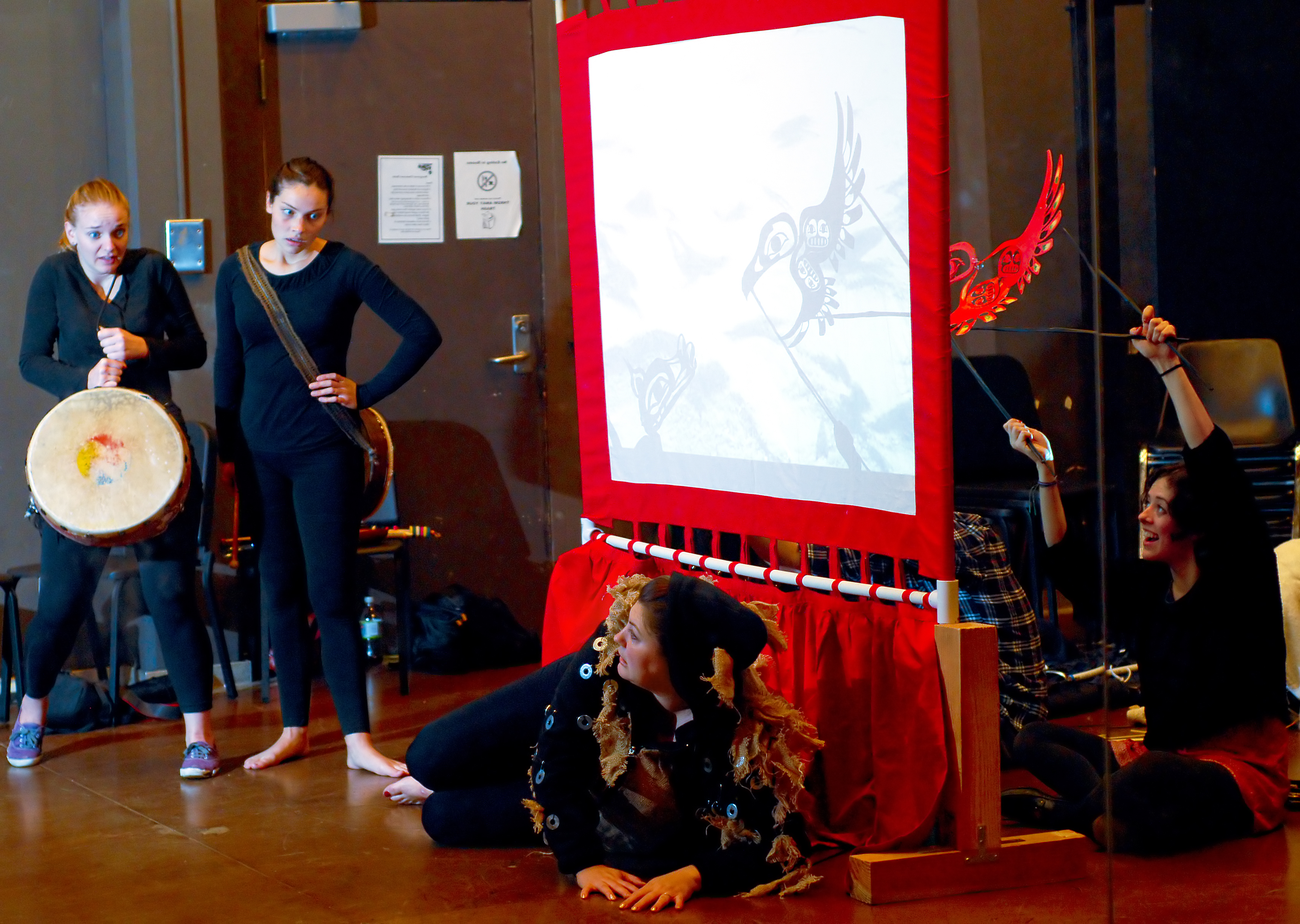Where do humans come from? A clam.
In “How the Raven Stole Fire and Other Stories,” Professor Patricia Harter, head of UCLA’s School of Theater, Film and Television Teaching Artist Program, and Louise Hung, the Geffen Playhouse’s teaching artist, explore folktales told in the Pacific Northwest that tell of the creation of the world.
Though the play is set to debut at the Geffen Playhouse on Saturday, it is currently in its third week of its five-week tour to low-income Title One elementary schools in the L.A. area.
“How the Raven Stole Fire and Other Stories” focuses on the Native American legends of the tricksters Raven and Coyote.
The play opens as hunters in search of game encounter Raven and Coyote. Using the hunters as a backdrop, the play intertwines three Native American folktales about Raven and Coyote, as they attempt to outdo each other and claim greater cleverness.
The play uses both shadow puppets and actors to convey the Native American tale. Shadow puppetry uses a light source and a screen to project a shadow that the audience can see.
“What I like about shadow puppets is that they give some sort of magic to an audience,” Hung said.
Though formatted as a children’s play, Hung said that shadow puppet performance requires a type of precision different from live acting ““ the ability to convey emotions without facial expressions.
“Shadow puppet(ry) has to show through action, so you shake the shadow puppet, or it nods its head, or gets bigger or stronger, and that portrays that same emotion (as an actor’s),” Hung said.
Harter, who has worked with shadow puppet theater in the past, said the tour gives students who may not normally be exposed to theater the chance to watch a play.
“It gives them an opportunity to learn stories that schools should be covering,” Harter said. “Native Americans are a part of Los Angeles heritage, and even though these stories are from the Pacific Northwest, it’s a neighbor. (It gives) them a means to compare other creation myths.”
The folktales portray Raven and Coyote as bringing good to the world by tricking others. While it may seem counterintuitive to teach children a moral that illustrates deception with a positive outcome, Hung said this is not the message.
“The lesson that I hope the kids can extract … is that you may not know where everything comes from, but there’s such a thing as cultural storytelling,” Hung said.
To guarantee that this lesson is not overlooked, Hung teaches a small workshop in the schools to have the students look for important details before watching the play.
“We ask them to look at how stories may not be 100 percent true, like all people don’t come from a clam shell, but Native American groups and cultures needed a way to explain this for themselves so they could start learning to understand the world,” Hung said. “There has to be some creativity in there.”
Actress Joy Nash, who plays Coyote in the play, said she finds the greatest enjoyment in the question-and-answer period following the performance. Though the segment is geared toward answering questions about the morals of the play, Nash said she is surprised at the details that younger viewers notice, such as a hunter’s hat.
“The play starts with a pair of hunters who are looking for their hunting hat,” Nash said. “I grab it … and we all run around the stage. It’s mostly kind of a throwaway thing. But without fail, every show that we’ve had, the kids (ask), “˜Well, who got the hat?'”
Nash said the challenge of keeping the children’s attention is much greater than when performing for an older audience.
“When you’re not connecting and you’re not in it, they know, and they don’t care anymore,” Nash said. “It’s an exciting thing, to see if you can hold their attention for that 45 minutes.”
